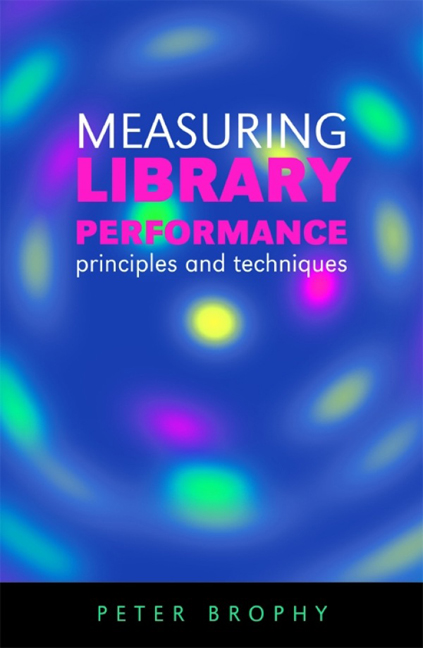Book contents
- Frontmatter
- Contents
- List of figures
- List of tables
- Preface
- Acronyms and abbreviations
- 1 Background
- 2 Theoretical considerations
- 3 User satisfaction
- 4 Impact on users
- 5 Social and economic impact
- 6 Inputs
- 7 Processes
- 8 Outputs
- 9 Staff
- 10 Infrastructure
- 11 Services for all
- 12 Benchmarking
- 13 The balanced scorecard
- 14 Standards
- Appendix 1 Data collection methods
- Appendix 2 The analysis of data
- Appendix 3 The presentation of results
- Index
Appendix 2 The analysis of data
Published online by Cambridge University Press: 08 June 2018
- Frontmatter
- Contents
- List of figures
- List of tables
- Preface
- Acronyms and abbreviations
- 1 Background
- 2 Theoretical considerations
- 3 User satisfaction
- 4 Impact on users
- 5 Social and economic impact
- 6 Inputs
- 7 Processes
- 8 Outputs
- 9 Staff
- 10 Infrastructure
- 11 Services for all
- 12 Benchmarking
- 13 The balanced scorecard
- 14 Standards
- Appendix 1 Data collection methods
- Appendix 2 The analysis of data
- Appendix 3 The presentation of results
- Index
Summary
■ Introduction
Having spent time and resources collecting data, it is clearly important that they be analysed thoroughly and properly. A lot will depend on the type of data collected – especially on whether they are quantitative or qualitative – and on the purpose for which they have been collected. For example, a survey of existing users in a small branch library on a specific topic might merit only manual analysis and a very straightforward report. At the other extreme a national study, possibly including comparisons between different libraries or even across sectors, will probably require detailed and complex analysis. In the latter case it might well be necessary to employ a trained statistician or other professional.
However, in each case the aim is the same. It is sometimes expressed as three stages (Miles and Huberman, 1994), especially when some of the data being analysed are qualitative in nature:
• data reduction, by gathering data together, coding them and expressing them in comparable ways so as to create datasets from which meaning can be extracted
• data display, which takes the datasets and presents them in ways that make their meaning clear, for example in lists or charts or graphs; note that this is still part of data analysis – presentation for reporting purposes is covered in Appendix 3, ‘The presentation of results’
• drawing conclusions, which finds the patterns and themes that emerge from the data; this stage also looks for exceptions and contradictions.
In this appendix the aim is simply to present the rudiments of data analysis as might be applied within a single library conducting its own studies. However, it should be stressed that it is very easy to analyse data wrongly, and advice should always be sought by anyone who does not have the expertise and experience gained through training and practice. Even the calculation of averages is not as straightforward as it may seem!
■ Quantitative data
Most studies produce at least some quantitative data even if they only relate to the numbers of people surveyed or the numbers of items analysed. In very small studies it may be feasible to analyse these data by hand, using a calculator, but it is usually better to make use of suitable computer software.
- Type
- Chapter
- Information
- Measuring Library Performanceprinciples and techniques, pp. 216 - 223Publisher: FacetPrint publication year: 2006



